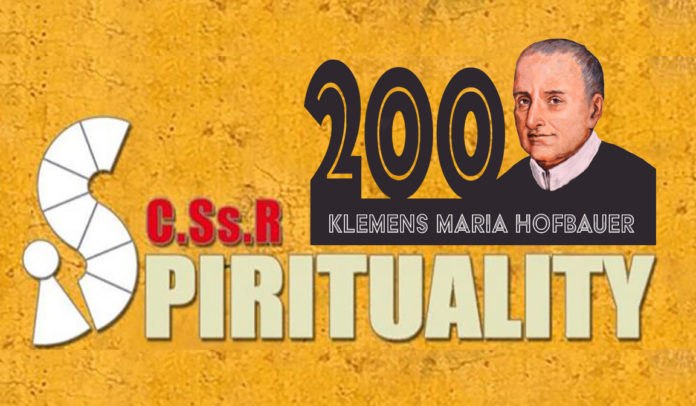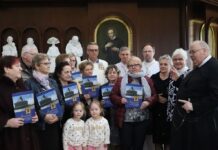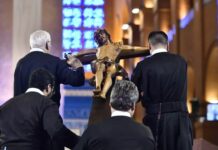Introduction
Those in a missionary vocation often find themselves in unknown situations. Everything is new and not at all familiar. Sometimes one tries to use the methods that have been tried and tested elsewhere, which often goes wrong. Or, one decides to go forward alone.
Without good networking, it usually takes a long time to open one’s eyes to different situations and realities. Clement Maria Hofbauer had to face many such challenges in his life. Much good has developed from these challenges that can still inspire us today – not least of all was his networking with many people who contributed to the mission.
Not alone – only together
In Warsaw, St. Clement was faced with a new situation. He brought with him pastoral experiences from Vienna and Rome but quickly realized that many strategies did not work and, above all, did not respond to people’s needs. The political situation also made public missions in the city impossible. Clement and his confreres had to find creative ways to apply the Redemptorist Charism in this new place, namely, Warsaw. The group was driven by the sincere desire to “ensure the salvation of the residents” (letter on December 31, 1879, to Superior General Blasucci). This objective was how the wonderful work of the “permanent mission” at the Church of St. Benno was created.
Like St. Alphonsus, Clement also understood that merely preaching was not enough. Sermons, charity, and education have to go hand in hand. In Warsaw, he saw the need for the education of the poorer classes and therefore founded schools, which was viewed critically at that time by the Congregation’s Government. But Clement wanted to make possible the experience of salvation in all dimensions, embracing the whole human person and his/her needs (cf. K 5). He saw what was needed. Among other things, he built an orphanage, a school for boys and a school for girls. Clement could not do this alone.
On the one hand, he restlessly looked for new members for the Congregation, investing a lot of energy in recruitment. On the other hand, he sought cooperation with laypeople, men and women, and founded associations of Oblates with a missionary focus in Warsaw, Jestetten, and Babenhausen. For example, a group of women was responsible for raising girls in Warsaw.
Clement also had plans for a missionary Congregation of women, but this would not be realized because of his expulsion from Warsaw. Later in Vienna, his network expanded to include prominent personalities, poets, and well-educated and studied women. Clement’s experiments had proven themselves valuable in uncertain times.
Clement was very much like St. Alphonsus, who founded the “capelle serotine”, in that Clement trusted everyone. Within the Redemptorist family, apostolic female Congregations, Oblates, Associates, and all who worked together within the Congregation, can learn from St. Clement. Part of Clement’s legacy to us is that the Redemptorist Charism is continually being renewed with the participation and interaction of many men and women.
The networking in the life of St. Clement acted as an echo of the life of the primitive Church. One of the most powerful biblical passages on how men and women worked together in the first Christian communities is Romans 16: 1-16. Paul mentions a variety of names and others that belonged to these communities. Jewish and non-Jewish names, individuals, couples, entire families, slaves, and free persons are recognized. Paul knew all of them “by name”, just as God knew his messenger, Moses, by name (cf. Ex 33:17). Paul also knew that without these persons, he could not have lived out his calling. This becomes particularly clear with Phöbe and many others, whom Paul said had assisted him (Romans 16: 1f). Paul appreciated Phobe’s work for grounding the Gospel. “From the beginning, the early Christian mission also lived from a dense network of personal relationships that arose or were renewed through the common faith”. (Rudolf Pesch).
Many persons can also be mentioned by name in the life of St. Clement: the confreres Thaddäus Hübl, Martin Stark, Joseph Amand Passerat, Johannes Podgórski, the Polish countess, and Helene Chrapowicka, who Clement called “nostra amica ed oblata”. In Vienna, there were Friedrich and Dorothea Schlegel, Sophie Schlosser, Johann Emanuel Veith, Joseph Freiherr von Penkler, and Maria Rizy, who later became a Redemptorist nun, and many more. The women who supported Hofbauer in Warsaw in the ministry with girls remain nameless.
Sister Maria Josepha in Babenhausen was very instrumental, but “she is uncomfortable for us because she also takes up the time of the brothers”, Clement wrote to his brothers (1806). So there was also that! Yes, those with whom we work also need attention and time. At times uncomfortable people are placed by our side! Yet, at the same time, perhaps some of them point out things overlooked and challenge us to new perspectives.
Partnership in mission – deeply connected to the Charism
The interaction of many has its origin in the history of the Redemptorist Congregation, going back to the very beginnings. Can one rightly say that this is an accident, or rather, is it deeply associated with the Charism? Is it a part of the creative loyalty to continue to look for forms that can be adjusted to a particular time?
The Redemptoristines have accompanied apostolic work with their prayers from the very first days. In 1843, twenty years after the death of St. Clement Maria Hofbauer, a female religious Congregation was founded, having been influenced by Redemptorist sermons. This Congregation was dedicated to the human and religious education of poor girls. Over the course of time, almost another 40 female Congregations have been founded, each of them associated with the Redemptorist Charism in varying degrees of identity.
Cooperation with Oblates and Associates is anchored in the General Statutes and is to be specified and updated in the individual units of the Congregation (Statute 02). Since the 21st General Chapter in 1991, the Congregation has intensified the work with laypeople, integrating them into the Redemptorist apostolic life in many forms and many places. This dynamic is based on an ecclesiology that takes the Gospel seriously: all baptized men and women are called and sent, all are responsible for the Missionary Church. The 25th General Chapter, 2016, also confirmed this direction and called for the advancement of “partnership in mission” as a sign of the work of the Holy Spirit. The one “missionary body”, of which Constitution 2 speaks, is expanded beyond the Redemptorist Congregation. Where Redemptorists and laypeople, male and female Religious, succeed in testifying to this “one missionary body”, they bear witness to a genuinely fraternal Church that recognizes its unity in diversity, in gifts, and diverse charisms.
All of this is not for our sake. It is also not a question of “balancing” the numbers in the countries where there are currently fewer vocations to live as consecrated Religious. The point is that everyone is needed and called when it comes to proclaiming Abundant Redemption. How nice it is when people say of us, here, men and women, priests, brothers, and laypeople work together in such a way that the Spirit and fire of the Gospel can be sensed!
Reflection Questions
· With whom do I/we work in proclaiming Plentiful Redemption? Names can also be collected on a poster, making them visible to everyone.
· What have been the most valuable experiences of partnership in mission for me? For whom am I particularly grateful? Who was my/our “support” (Rom 16,1)?
· What new goals and objectives can be set up taking into account “partnership in mission”? With whom else can we connect? What contacts can we make in order to intensify the proclamation of Plentiful Redemption today?
Prayer
God of life,
You worked in the life of St. Clement Maria Hofbauer
and placed many people at his side to proclaim with him
the Abundance of Redemption.
We thank you for all those who stand with us today
in announcing the liberating message of the Gospel.
We thank you for their friendship and their testimony,
for their gifts and charisms.
May we work with them in this wounded world
so that liberation and healing can be experienced.
We are ready to be recommissioned as one missionary body.
Bless all the steps we take in this endeavor and give us courage and evangelical creativity.
We ask for this through your Son, Jesus Christ, in the Holy Spirit.
Amen.
——————————————————————————————————
 ONE BODY is a monthly prayer text proposed by the Center for Redemptorist Spirituality.
ONE BODY is a monthly prayer text proposed by the Center for Redemptorist Spirituality.
This text was written by Sr. Anneliese Herzig MSsR,
Mission Sisters of the Most Holy Redeemer
Translation: Johannes Römelt CSsR and Manuel Rodríguez Delgado CSsR
For more information: Piotr Chyla CSsR (Director of the Center for Spirituality – fr.chyla@gmail.com).







